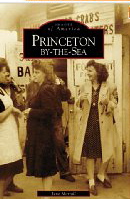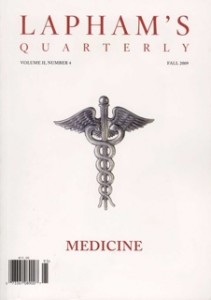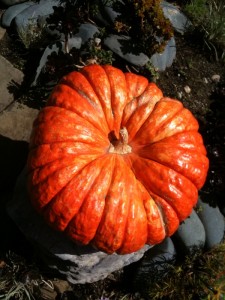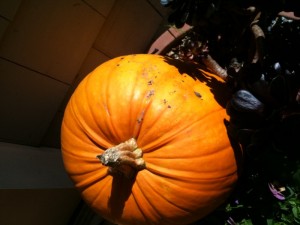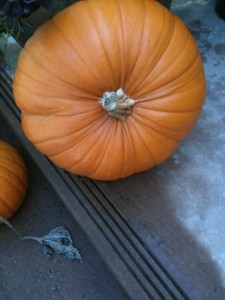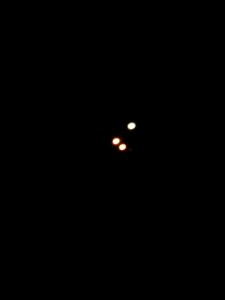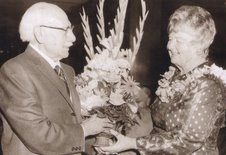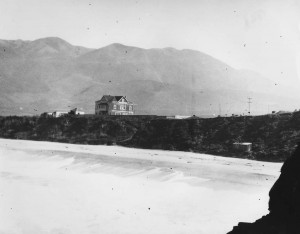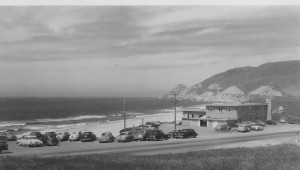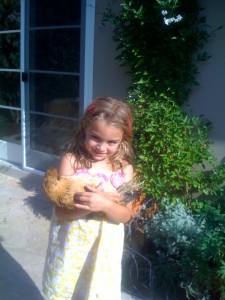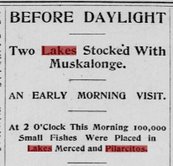Hi June,
The posting I sent you about an article entitled “
Mammoth Reservoirs,” in the 1893 “Morning Call,” piqued my curiosity about Pilarcitos Lake and I did some further research.
I was surprised by what I found. While, I’m not surprised about my ignorance of it, being a non-resident of San Mateo County, whose primary interests are on the Coastside, more accurately on the coastal strip itself, I’m willing to bet most citizens of the Coastside are just as unaware of this freshwater Crown Jewel of their county as I am. As the “Mammoth Reservoirs,” article detailed that was not always so. How and why this happened and whether it will ever change I’m still forming my opinions about, so let me start slowly with a couple of old newspaper articles that shine a light on the lake’s uniqueness.
This first one is from the January 28th, 1894 issue of “The Morning Call.”
AMONG BREWERS.
MORE USE FOR CALIFORNIAN FRESH WATER
TESTING AND ANALYZING PILARCITOS WATER
TO ASCERTAIN ITS ADAPTIBILITY FOR ALE
“Famous in all countries is the celebrated water at Burton-on-Trent in England. It is supposed to be the finest in the world for brewing purposes, and sufficient ale is turned out annually to float a fleet. An expert from that town has been making some analyses to find if one of the Californian reservoirs can furnish a similar quality, lf it is found that water similar to that at Burton can be got in California, it will soon be unnecessary to import
English ale. Trials are being made of tbe water of Lake Pilarcitos, seven miles from
Milbrae. If the tests and analysis prove satisfactory, overtures will be made to the
Spring Valley Water Company for a supply. It is known that the Pilarcitos water is singularly pure and free from every kind of deleterious matter, and that the company spends a good deal of money in keeping It so, but it has not yet been shown that it has those peculiar properties for which Burton is renowned. All the Spring Valley Company’s reservoirs will be tried in turn, and the Englishman’s opinion is that among so many splendid bodies of water it will not be difficult to get what be desires. If so there will be more capital invested in California very shortly. It is probable that Lake Pilarcitos will be
the water cbosen, provided that the Spring Valley people come to terms.”
This second article is from the May 31st, 1893 issue of “The Morning Call.” It reveals something that even the experts are not aware of, that being that Lake Pilarcitos was planted with Muskellunge. More on this at the end of the article.
BEFORE DAYLIGHT
Two Lakes Stocked With
Muskellunge.
AN EARLY MORNING VISIT.
At 2 O’Clock This Morning 100,000
Small Fishes Were Placed in
Lakes Merced and Pilarcitos
. Between 1 and 2 o’clock this morning Lake Merced and Lake Pilarcitos were stocked with over 100,000 choice Muskellunge, which arrived here yesterday on the overland from Lake Chautauqua, New York.
This is the first time that a carload of small fish has ever been brought clear across the continent. This was in the nature of an experiment, and proved entirely successful. At 1 o’clock the special train, consisting of an engine, the United States Fish Commission’s private car and a Southern Pacific caboose, reached Ocean View. In the Government car were Colonel G. Lambson and five assistants, 100,000 Muskellunge and Deputy State Fish Commissioner Babock.
The fish were brought here in large cans about the size of the ordinary milk can. A
wagon was in waiting at the station at Ocean View, and a little over half of the
fish on the car were transferred to the wagon and taken down to Lake Merced, a
distance of Iess than two miles. Before emptying the contents of the can in the lake the temperature of the water was taken by Colonel Larnbson, and found to be about right for the reception of the young fish.
The latter are but 8 days old and wee small things not much larger than the point of a sharp leadpencil. Each can contained a thousand or so of the minute creatures, and in all, sixty cans were emptied into Lake Merced. The work was done quickly, because it had all been admirably planned before hand. At three different places within a distance along the shore of less than a mile the cans were emptied.
When the work was done there the party returned to their car and the special train
ran speedily to Millbrae, where the remaining cans were conveyed about seven miles in a wagon to Lake Pilarcitos. About the same process was gone through there, the cans being emptied at different places where the water is shallow and much warmer than it is farther out. The temperature of the water was also taken by Colonel Lambson and found to
be the same as that at Lake Merced. The work was done very expeditiously and in a manner that caused Colonel Lambson to compliment the State Fish Commission and express the opinion that it could not have been done better.
It was about midnight when the Government’s special fish-car arrived at Fourth and Townsend streets, where it was boarded by a Call reporter, who accompanied the party on their early morning fish-stocking excursion. The car itself is built specially for the transportation of young fish. On both sides of the aisle that runs through the car from entrance to entrance are the tanks, or wooden receptacles, for the cans containing the fish. These receptacles are covered over, and on their covers are a dozen or more
revolving chairs for the accommodation of the Federal Fish Commissioner and his
assistants. At the forward end of the car are several large water tanks and a small engine for generating steam to heat the car when the severity of ihe weather requires it.
During the overland trip from New York no artificial heat was needed, Colonel Lambson says. There are several thermometers in the car, but they managed to keep the. mercury in these about right by opening and shutting the windows. There are bunks in the car that let down the same as in a Pullman sleeper, and in the rear end is, besides more water tanks, a miniature kitchen and larder that suffices amply for the culinary needs of the party.
“We had a very pleasant trip,” said Colonel Lambson. “and were quite successful in the transportation of our cargo. A few of the fish died while crossing the mountains, but their number is really too small to consider seriously out of a total of over 100, 000. “Yes. we found enough work to do on a trip like this. We have the water to change every day or oftener, the temperature to keep just so, and fresh air to admit and exclude at different times and a whole lot of that kind of attention to bestow on these tiny young creatures.
“They are pretty small now, but if they do as well out her as they do in Lake Chautauqua and other places in the East they will grow to weigh as much as thirty five and forty pounds. I have seen many of them at the latter weight.
“We carry the water with us and ice as well. The weather has been so even on
this trip, though, that we have not used much of the latter. In these tanks here
we have about 2000 gallons of water, and we had a ton of ice aboard when we left
Chautanqua.
“What is the hurry in getting the fish into the lakes to-night? Well, this is the first experiment «t the kind made by the Government, and we are not going to waste a moment or leave a stone unturned that might make toward success. “So far we have been very successful, and I have no doubt that the fish we have put in to-night will thrive as well here as in their native waters.”
It is calculated that when full grown the imported muskellunge will kill off the myriads of worthless carp with which Lake Merced is now infested. This is said to be the chief reason for bnnging the muskellunge out here, though in themselves they are a very gamy fish f’or sportsmen and their flesh is choice when properly cooked. It might be supposed by the uninitiated that there was danger to these young muskellunge from the fierce and warlike
nature of the carp, but this is not so “The carp is a vegetarian,” says Colonel Lambson, and will not eat these young fish. When they get a little bigger they will be more than a match for the carp. They can be depended upon to clean out the carp entirely in due time, for they are a fish of prey and fight like lions for tlieir food.
All slothful and useless fish the muskellunge prey upon, and will in time drive out
of ‘the waters. “I will probably visit the lakes we have stocked to-night in a day or two. again and then proceed to Monterey with this car. Here we expect to make a collection of native fish for the government fish exhibit at the World’s Fair. Yes; we will work pretty fast at Monterey, and hasten back to Chicago as speedily as possible.
The muskellunge— some authorities call it muskinonge— is the most beautiful
specimen of the pike family. The tribe is native to the range of large lakes and rivers of our northwestern boundaries, and to most of the lakes and rivers in the vast northwestern wilderness, extending to the frigid zone. ‘”In appearance the muskellunge looks a great deal like the common pickerel of Eastern waters, but there are certain radical differences that readily distinguish them to the expert angler. “The mandibles of the muskellunge are longer than those of the pickerel, the tail is more forked and larger, the dark gray back and light sides are dotted with black spots, and the outline of the fish is more delicate, presenting an appearance of greater refinement and higher breeding
than the pickerel or pike.
But the meat of the muskellunge is compact, white, tender and particularly delicate and rich in flavor, without partaking of any taint of extraneous substance, such
as decayed wood and bark, which so commonly affect the flavor of pickerel and even
trout. “In Canada the muskellunge often attains a length of seven feet and weighs as
high as from 60 to 70 pounds. But when so large they are not so richly flavored as
those weighing 30 or 40 pounds. The favorite way and the best way to angle for these fish is with a troll and reel. A feathered squid is the best bait. You will find these fish very gamey. They will fight against capture up to the very last moment, and a certain degree or skill is necessary to land them successfully.”
Colonel Lambson accepted the hospitalities of Deputy Babcock this morning when his special car reached the city, and today he will have a consultation with the members of the State Fish Commission.”
You might remember I sent you a posting some time ago of the appearance of a sea lion at a saloon along the stage road to Spanishtown. The article mentioned that the probable source of the wayward sea lion was due to the Spring Valley Water Works having planted a handful of sea lions in Lake Merced and other reservoirs in hopes they would eat the carp that were fouling the water.
That led me to a series of newspaper articles about the introduction of Sea Lions to Lake Merced complete with pictures. While the sea lions initially ate some of the carp, they soon were terrorizing farmers and other neighbors as they made their way to more familiar and richer feeding grounds. Well, there is more to that story then detailed in the newspapers, as I found out in an amazingly thorough online document by Professor William Dill and Professor Almo Cordone entitled “History and Status of Introduced Fishes in California.” For those who think we have a pristine environment in regards to fish stocks in California this is an eye-opening document. Half of the 111 species of “native” fishes in California were introduced. Here’s what the document says about the muskellunge introductions to California:
Muskellunge, Esox masquinongy Mitchill
“The largest of the pike family (Esocidae), the muskellunge is native to the United States east of the Rockies and central and eastern Canada (where it is called the maskinonge). It is a highly predacious fish and the respected quarry of specialized anglers.
93,000 muskellunge fry were received from Chautauqua Lake, New York, and planted in Lake Merced (California Fish Commission Report for 1893–94, p. 29–30, 75; Smith 1896, p. 437–438).[145]
This planting was undertaken by the California Fish Commission at the solicitation of the owners of the Lake, the Spring Valley Water Company, who had heard of the voracity of this species. The New York Fish Commission provided the muskellunge fry, and the U.S. Fish Commission defrayed a portion of the costs of transportation as did the Company. The State of California was at liberty to take stock from the lake for plantings elsewhere.
Smith (1896) stated that carp control was probably the chief reason for the muskellunge’s importation. However, the State Fish Commissioners made no allusion to this in first describing its introduction. They merely said that it was in pursuance of their efforts “… toward securing a continued increase of the food fishes of the State….” (California Fish Commission Report for 1893–94, p. 29). Whatever the reason may have been, the efforts were not successful. Two years after planting, the lake was dragged with seines. No carp were taken. The muskellunge had vanished. The sea lions had grown thin (Smith 1896, p. 396).
It is believed that the plant in Lake Merced was the only plant of muskellunge in California,..”
Well, we know the full story. Or do we? More on that in Part 2. Enjoy. John
